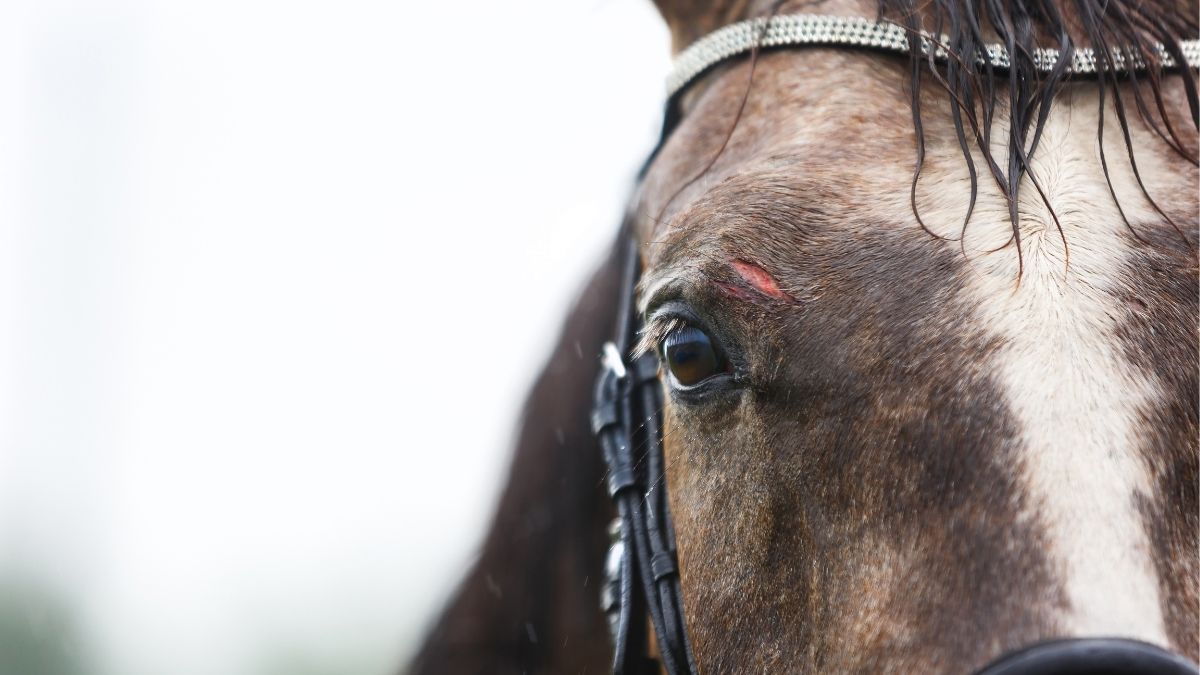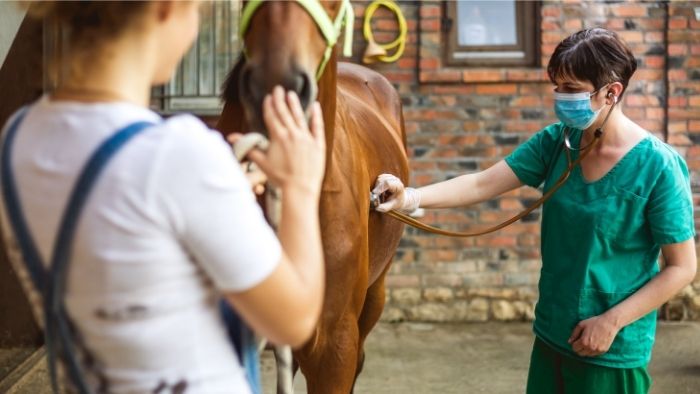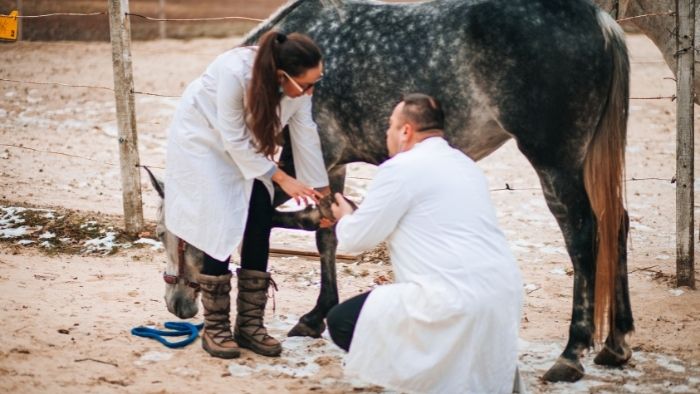Looking at horse wounds pictures isn’t a pretty sight, but you need to know what to look for if your horse ever gets injured.
While most horses don’t recover from serious injuries, some owners keep their faith and walk the difficult path of rehabilitating their horses.
In this article, I share how horses get wounded and summarize some incredible stories to give you hope for your horses’ recovery!
How Horses Get Wounded
Horses can get wounded by doing everyday things.
Abrasion wounds can be caused by harnesses that don’t fit well. Your horse’s harness can slip and slide along their skin, causing abrasion wounds.
Cuts and scrapes can be caused in several ways. Your horse can run into a sharp object and cut themself, or even just bump into wire and tear their skin. Scrapes can be caused when your horse scrapes themself against any hard surface.
Horses can easily step on nails or sharp objects, causing puncture wounds. Bumping into something can cause bumps and bruises underneath their skin. Insect bites can cause infections. Horses can stick their heads through spaces not meant for them to go through and injure themselves. Horses can also fall and be injured in this way.
All of these wounds can take some time and effort to heal. How well or quick an injury heals depends on a lot of factors. A horse’s age can cause wounds to heal in specific ways. Younger horses generally recover quicker than older horses. Horses that are healthy also heal a lot quicker than sick horses.
Horse Wounds That Take The Longest To Heal
While most wounds should show healing within a few days, some injuries take longer. There are several reasons that wounds don’t heal the way they should. Infection inside the wound can cause slower healing, as well as foreign objects.
Movement of the wound can also slow down healing. New tissue cannot form if an injury is constantly moving. Poor blood supply is another factor to consider if a wound doesn’t heal. Generally, the deeper a wound, the harder it is for the horse’s body to heal.
Tumor growth can be a factor in healing too. This generally happens when a wound starts forming too much cell growth. Open wounds also take much longer to heal than bruises and scrapes. Deep flesh wounds take longer to heal than simple shallow cuts.
Horse Wounds Pictures: Before And After
Zeke’s Injury
Zeke wounded himself, and his owner had to make a difficult decision: put him down or go through an extensive healing process that might not work. Here’s his incredible story and some graphic pictures of his wounds.
Here are more remarkable healing stories:
- A stud horse injured his lower leg. He reared up in his stall at another horse, and his leg caught on something, causing a huge open gash. It took his wound 90 days to heal.
- A beautiful mare was injured on her leg. She kicked through a steel slat at a stock sale. Her lower leg was cut and hurt pretty badly. Her wound took a total of 120 days to heal.
- When a two-year-old colt from Ohio fell through the grate of a grain elevator, most people thought he wouldn’t survive his injuries. The lower part of his leg was degloved. His wound took an astonishing 6 months to heal completely, without any scars.
- An Indonesian pony was rescued from her owners. Her leg was degloved in an accident. The owners had tried to heal her wound with boiling water, causing burn injuries. Her wounds took 6 months to heal. She has no scars from her injuries.
- In Utah, a barrel horse was injured. This happened only days after being bought. He degloved most of his leg when he cut it on a wire. The cut took 3 months to heal.
- A Young horse cut its heel with a wire. The heel was open and cut in a coronet. It was bandaged and healed within 5 weeks.
- The resulting injury was horrific when a yearling colt stuck his head through a pipe gate hinge. His face was peeled back from the head, exposing bone. This facial injury took 8 weeks to heal.
- Rosie, the two-year-old roping horse, was attacked by a mountain lion. The mountain lion degloved the side of her face. Her injuries took 6 weeks to heal.
- A ranch gelding in Oklahoma stuck his face through a barbed-wire fence. This caused degloving of his face. The injuries took 8 weeks to heal.
- A colt got a gash down his flank. This was caused by him running into a steel gate latch. Because of this injury, two ribs needed to be surgically removed. This lucky guy made a full recovery in 8 weeks.
In Ending
I hope this article was informative and that you feel inspired by the real-life stories of horses who recovered from serious injuries. If you have any questions or a story of your own, share it in the comments!
FAQs
What does an infected horse wound look like?
If your horse's wound has red skin surrounding it, they may have an infection. The wounded area can also feel warm, and yellow pus can emerge from the wound.
What can I put on a horse's open wound?
If your horse has an open wound, you can apply a disinfectant dilute like Betadine on it. This will help kill bacteria.
You should also call your vet for proper care instructions. They can prescribe ointment for healing.
What are the four main types of horse wounds?
The four primary wounds horses get are abrasions, avulsions, punctures, and lacerations.
Do wounds heal faster, covered or uncovered?
Surface level cuts and scrapes heal better when they're left uncovered. You'll need to carefully cover deeper wounds to help keep cells alive. Once a deep wound starts healing, you can leave it open.


